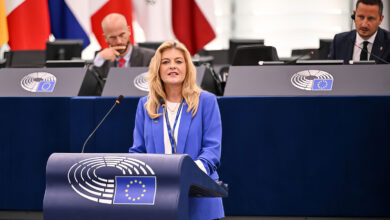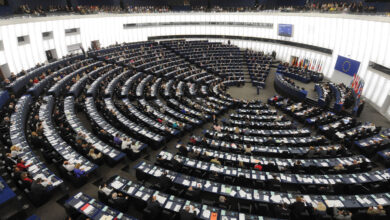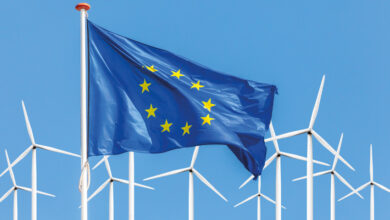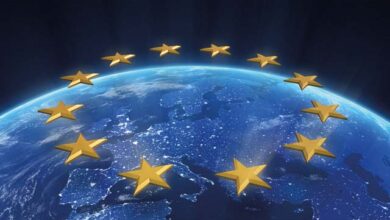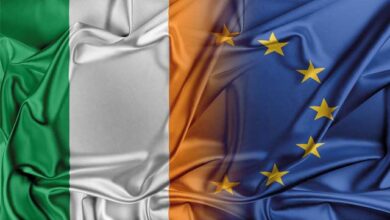Ireland’s ‘first eleven’ qualify for Europe
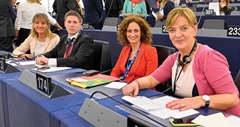 Michael McKernan looks at the state of play as the new European Parliament gets down to work.
Michael McKernan looks at the state of play as the new European Parliament gets down to work.
The 2014 European parliamentary election result very definitely reflected the current new order of politics in Ireland, with Sinn Féin and independents performing extremely well against the more established parties, particularly Fianna Fáil and Labour. Eleven Irish MEPs (previously 12) have now been dispatched to Strasbourg and Brussels, six re-elected as incumbents and five new faces.
The new line-up is four Fine Gael (the party surprisingly held on to its four seats very neatly in the end), three Sinn Féin (up from zero in 2009, plus one elected in Northern Ireland), three elected as independents and one other independent, formerly with Fianna Fáil.
The Labour Party lost all three of the seats it had won at the previous election although one of its former MEPs, Nessa Childers, having left the party secured a seat standing as an independent in the Dublin constituency.
Just as Fine Gael had squeezed the maximum number of seats from its share of the vote, Fianna Fáil did the opposite, having a much inferior conversion rate. Despite actually registering marginally more first preference votes across Ireland than Fine Gael, Fianna Fail’s return was only one seat, won by the poll-topping Brian Crowley. In the South constituency, Crowley registered the highest first preference vote of any candidate in all three constituencies although he transferred insufficiently to his running mate to secure a second seat.
Even worse for Fianna Fáil, a subsequent row with Crowley over his decision to join the euro-sceptic European Conservative and Reformists – a group dominated by the UK Tories – resulted in his expulsion from the party, leaving the traditionally largest party in Ireland with no representation at all in the Parliament.
Inside the Parliament itself, MEPs generally set to one side their national political party label and set about aligning themselves within one of the established political groupings which reflect a broad swathe of opinion across the socio-economic spectrum from left to right.
Although as expected, the Fine Gael members continued their relationship with the European People’s Party grouping and the largest single group in the Parliament since 1999, there was considerable interest in where Sinn Féin and the independents would go.
Unsurprisingly, independent MEP Nessa Childers stayed with the Socialist Group (now the second largest) where she had been previously as a Labour representative. Similarly, independent
MEP Marian Harkin stayed with the Alliance of European Liberals and Democrats.
The final independent MEP, the often outspoken Luke ‘Ming’ Flanagan who had previously been elected to Dáil Éireann, joined the same group as Sinn Féin’s four MEPs – the Confederal Group of the European United Left – Nordic Green Left. This group has 52 members and is essentially an alliance between smaller radical left parties from a large number of member states. The group includes Czech, French and Portuguese communists, the radical left in Greece and Germany, and one or two single-issue parties such as the German Human Environment Animal Protection Party and the Danish People’s Movement against the EU.
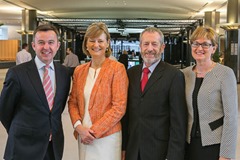 Following decisions about political alignment, Ireland’s MEPs made their pitches for committee memberships. Each MEP secured full membership of at least one parliamentary committee and ‘substitute’ membership of at least one other committee. Although the European Parliament’s committees can be unwieldy and bureaucratic, they have grown in power over the years and make an important input into policy-making and decisions of both the European Commission and European Council. All of the Irish MEPs have secured positions on influential committees (from an Irish perspective) including those for agriculture, the environment, employment, transport and tourism, the internal market, and economic and monetary affairs.
Following decisions about political alignment, Ireland’s MEPs made their pitches for committee memberships. Each MEP secured full membership of at least one parliamentary committee and ‘substitute’ membership of at least one other committee. Although the European Parliament’s committees can be unwieldy and bureaucratic, they have grown in power over the years and make an important input into policy-making and decisions of both the European Commission and European Council. All of the Irish MEPs have secured positions on influential committees (from an Irish perspective) including those for agriculture, the environment, employment, transport and tourism, the internal market, and economic and monetary affairs.
One outstanding initial achievement among the Irish MEPs was where Mairead McGuinness was elected to the position of Vice-President of the European Parliament. Although the Parliament elects the President and 10 vice-presidents, McGuinness almost topped the poll coming a narrow second and securing election on the first count. In this role, she will be part of the bureau, chaired by the President, which effectively presides over the running of the Parliament.
The change in the Irish ‘eleven’ now taking their seats is very significant in terms of how it reflects Ireland’s changing underlying attitude to the European Union. For many years, Ireland has been overwhelmingly pro-Europe (despite some treaty hiccups) and has returned MEPs who are broadly in favour of the European project and its institutions. However from 2014, five of the 11 Irish MEPs are now aligned with markedly euro-sceptic groupings. On the right, Brian Crowley sits with the increasingly anti-European conservatives while on the left, Sinn Féin and Ming Flanagan are also aligned with an anti-EU dominated group.
It is unlikely that any of this Irish MEP euro-scepticism will affect the overall relationship between Ireland and the European Union, but it does possibly reflect the current discontent among Irish citizens about how the country has been treated by the more powerful European states during the economic crisis and the subsequent bail-out.
It will also be interesting to see if Irish MEPs make much of an impression overall in this new term of the Parliament given that the eleven representatives are perhaps, collectively and individually, the most radical group of politicians Irish voters have ever sent to Europe.
This, however, was not the case north of the border: In Northern Ireland, as so often, very little changed in the election with the three incumbent MEPs – Jim Nicholson (UUP), Diane Dodds (DUP) and Martina Anderson (Sinn Féin) – being comfortably returned to the Parliament.

